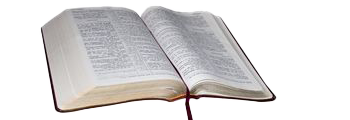
CHURCH OF THE BRETHREN NETWORK
Continuing the work of Jesus : Peacefully ~ Simply ~ Together
UNOFFICIAL WEBSITE OF THE CHURCH OF THE BRETHREN

 |
CHURCH OF THE BRETHREN NETWORK Continuing the work of Jesus : Peacefully ~ Simply ~ Together UNOFFICIAL WEBSITE OF THE CHURCH OF THE BRETHREN |
 |

Holy Roman Emperor Charles V
Born: 1500 ~ Ghent, BelgiumHapsburg heir to the Holy Roman Empire who ruled over more territory than any other European monarch. Charles became emperor in 1519, preceded by a unique series of royal marriages that gave him Germany, the Low Countries, Spain and Spanish conquests in America, Hungary, and parts of Italy. He was the paternal grandson of Maximilian I of the Hapsburgs through father Philip I, and maternal grandson of Ferdinand & Isabella of Spain through mother Joanna of Castile. In a few short years his mastery of ruthless political control and grand scale determination positioned him as the crowning glory of the Hapsburg family, a dynasty that extended from Rudolf in 1273 until Karl Franz Joseph of Austria in 1918. In fact, it was the assassination of the next heir to the Hapsburg throne, Francis Ferdinand in 1914 that started World War I and brought to a close one of Europe's grandest dynasties. Charles V inherited a great deal of territory and his dream was to make it the largest empire since the days of his predecessor Charlemagne. His dream involved continuous warfare, especially against his arch rival for Italy, Francis I king of France. Pope Leo X tried to limit his influence in Italy but Charles invaded Rome, plundered it, and made Leo a prisoner for a while.
The support for Luther by German princes appeared to Charles as a political maneuver to eventually secure independence for the German states. He entrusted the German government to his younger brother Ferdinand since he was embroiled in a large scale war with France to maintain his control over Italy, plus infrequent campaigns against the Turks due to their steady advancement into his eastern territories. Many historians cite the lack of a direct German involvement by Charles as a major element in the success of Protestantism. To combat the threat of Luther and the princes, Ferdinand made alliances between Bavaria and other Catholic states against the Lutheran states. This process of division led to religious wars over the next several generations (Thirty Year's War), and eventually the division of Germany into a Protestant north and east with a Catholic south and west. This arrangement that still exists today.
After Luther's cause gained substantial momentum, especially the endorsement from German nobility, Charles requested, in 1530, that he receive a formal theological presentation of Lutheran beliefs at the city of Augsburg. He also summoned representatives from the Catholic opposition led by Johann Eck. Since Luther was barred from attending, his close friend Philipp Melanchthon, also a professor at Wittenberg, delivered what has become a basic statement of faith to the Lutheran Church known as the Augsburg Confession. Melanchthon had a calmer personality than Luther and tried to offer solutions to the many issues that divided Catholics and Protestants.
Charles rejected Luther and Melanchthon's Confession at Augsburg which motivated the Protestant princes to quickly form the Schmalkaldic League in their defense. With the continued threat of Turks in the East and his war with France in the West, plus additional domestic unrest, Charles finally made concessions to the Protestants in 1532 with the Peace of Nuremburg. In 1547, Charles achieved a temporary victory over the Protestants at Magdeburg, but later fled when his general, Maurice of Saxony deserted him. In 1555, Charles conceded to Protestants with the Peace of Augsburg which recognized their right to exist, and the right of princes to determine the faith of their own districts.
Fatigued by constant warfare, religious struggles, and domestic problems, Charles abdicated to his brother Ferdinand in 1556, and retired to a monastery in Spain where he died two years later.
Written by Ronald J. Gordon as extended information for other major articles